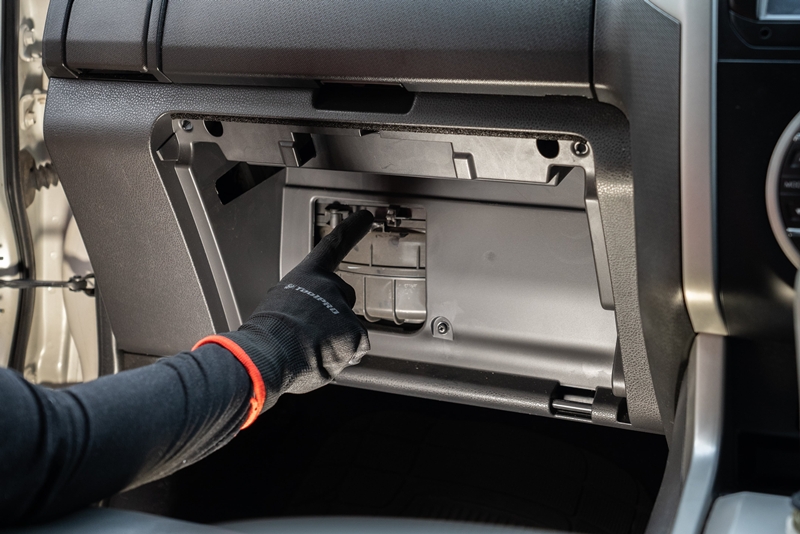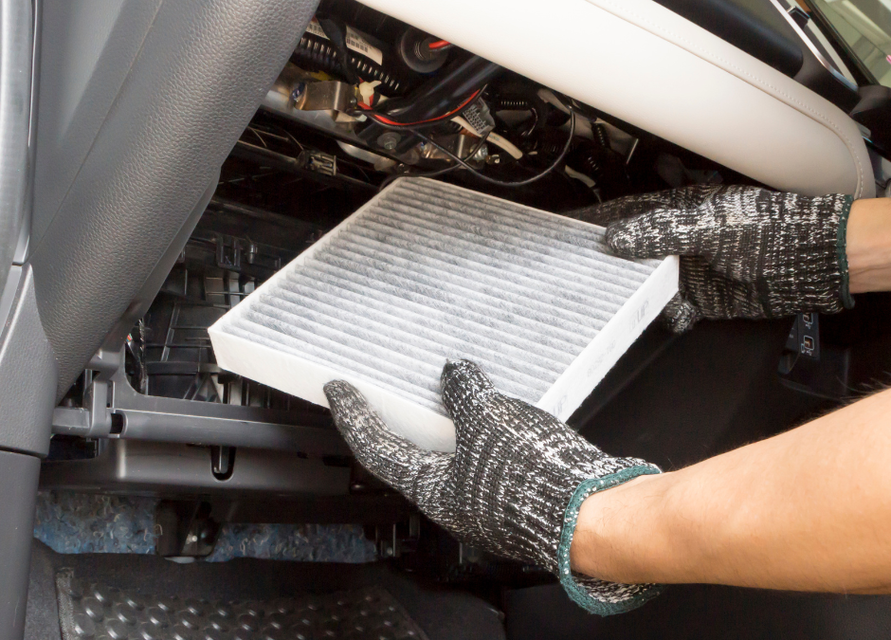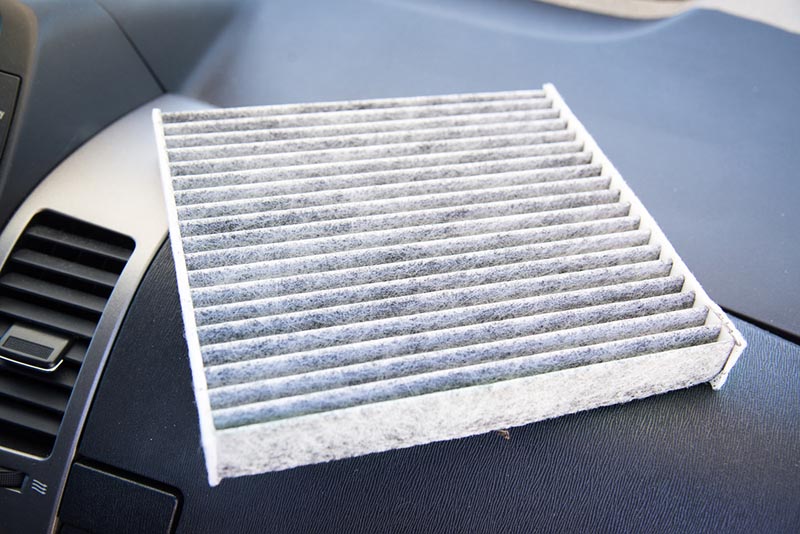While the general replacement process is similar across vehicles, certain makes and models have unique access methods and special considerations. Understanding where your filter is located is the first step in knowing how to replace your cabin air filter efficiently.
Also read: How To Replace Your Cabin Air Filter: 7 Simple Steps | Save Money DIY
Cabin Air Filter Replacement Long-Term Benefits
Regular cabin air filter replacement contributes to:
- Extended HVAC system life due to reduced strain on components
- Maintained resale value through documented regular maintenance
- Potential fuel economy benefits from efficient system operation
- Reduced likelihood of expensive repairs to climate control components
- Healthier vehicle interior with fewer allergens and contaminants
The Benefits of Regular Cabin Filter Maintenance
Now that you know how to replace your cabin air filter, it’s worth understanding why doing it regularly can make a real difference for your vehicle — and the environment.
Healthier Air Inside Your Car
A clean cabin air filter improves the quality of air entering your vehicle, reducing the presence of dust, pollen, mold spores, and exhaust fumes.
Improved HVAC Performance
Dirty or clogged filters put extra strain on your HVAC system, which can reduce airflow and cause your fan to work harder. Regular filter changes ensure smooth operation and can even extend the life of the system
Where to Purchase Quality Cabin Air Filters
When learning how to replace your cabin air filter, one of the first steps is knowing where to buy the right replacement. Fortunately, you have several reliable options depending on your budget, convenience, and filter preferences:
- Dealership Parts Department: Offers OEM (Original Equipment Manufacturer) filters designed specifically for your vehicle. These are usually the most precise fit but also the most expensive option.
- Auto Parts Stores: A great middle ground with both OEM and aftermarket options. Store employees can help you find the exact filter you need based on your vehicle’s make, model, and year.
- Online Retailers: Websites like Amazon, RockAuto, and others often offer the best deals. However, you’ll need to be absolutely certain of the part number or use the site’s fitment tool to avoid ordering the wrong item.
- Quick Lube or Service Centers: While convenient, these locations often charge a premium for parts and installation. If you already know how to replace your cabin air filter, buying the part yourself and doing the job at home can save you a lot of money.
Domestic Vehicles (Ford, Chevrolet, Dodge, etc.)
Ford Models:
- Most Ford sedans and SUVs have filters behind the glove box with simple clip-release mechanisms.
- F-Series trucks often place the filter under the passenger-side dashboard.
- Newer Ford models may locate the filter in the engine compartment, requiring a hood lift to proceed.
Before you can learn how to replace your cabin air filter on a Ford, it’s crucial to identify which of these placements your vehicle uses.
Chevrolet/GM Vehicles:
- Many Chevy models have the cabin air filter behind or below the dashboard on the passenger side.
- Full-size SUVs like the Suburban may require removal of the wiper cowl to access the filter.
- Lower dash panel removal is sometimes necessary in certain vehicles.
No matter the configuration, knowing how to replace your cabin air filter in a Chevy begins with locating the access panel and understanding the clip or screw layout.
Dodge/Chrysler:
- Most filters are behind the glove compartment.
- Some models have dedicated service doors, making the process easier.
- Certain Jeep models position the filter in the engine bay near the firewall.
Glove box or engine bay — once you identify the location, you’ll have a better idea how to replace your cabin air filter correctly.
Asian Vehicle Models
- Nearly all Toyota models feature behind-the-glove-box access.
- Some offer a slide-out tray design for tool-free replacement.
- Airflow direction is clearly marked on most Toyota filters.
These features simplify the task, making it easy for owners to figure out how to replace your cabin air filter with minimal tools.
- Filters are commonly located behind the glove box.
- A two-clip mechanism is used to release the compartment.
- Civic and Accord models are especially beginner-friendly.
If you’re driving a Honda, you’re in luck — learning how to replace your cabin air filter often takes less than 10 minutes.
Hyundai/Kia:
- Most models follow a behind-the-glove-box design.
- Newer models may feature lower dashboard access points.
- Factory filters often include antimicrobial coatings.
Whether it’s glove box or dashboard access, once you find the location, it’s straightforward how to replace your cabin air filter on these models.
European Cars
BMW:
- Filters are typically located in the engine compartment under a cowl.
- Some series use under-dash locations instead.
- Filters tend to be larger and more durable, sometimes requiring special tools.
These placements can add a few minutes to the process but don’t worry — even if it’s your first time, there are plenty of tutorials on how to replace your cabin air filter in a BMW.
- Usually positioned behind the glove box.
- Some models require replacing two filter components.
- Careful handling is needed to avoid damaging trim pieces.
Replacing the filters in luxury models may feel intimidating, but once you know how to replace your cabin air filter in a Mercedes, it becomes a manageable routine task.
Volkswagen/Audi:
- Cabin filters are commonly behind the glove box.
- A slide-lock design replaces traditional screws.
- Many models include charcoal layers for odor filtration.
These brands make it fairly intuitive how to replace your cabin air filter, especially with the tool-free locking designs.
SUVs and Trucks
Larger vehicles sometimes present more involved procedures:
- Full-size trucks may hide filters behind kick panels.
- Some SUVs require console or panel removal for access.
- Filters are generally larger, providing extended service intervals.
If you drive a large SUV or pickup, finding out how to replace your cabin air filter might involve a bit more effort — but the process is still manageable at home.
Hybrid and Electric Vehicles
Modern electrified vehicles often include enhanced filtration features:
- Many EVs include HEPA-grade filters for better air purity.
- Tesla models may offer specialized filters and features like Bioweapon Defense Mode.
- Hybrid filters are typically found in the same place as those in their gas-powered counterparts.
As these technologies evolve, learning how to replace your cabin air filter in an electric or hybrid car is essential to maintaining interior air quality.
No matter what you drive, how to replace your cabin air filter always begins with finding it. Your owner’s manual remains the best resource for exact location and service instructions. If you’re still unsure, local auto parts stores or online guides can help you identify and access the filter with confidence.
The Long-Term Savings
Most manufacturers recommend replacing the cabin air filter every 12,000 to 15,000 miles — about once a year for the average driver. Over a 10-year period, that adds up to 10 or more replacements. Let’s break it down:
- DIY (over 10 years): $100–$500 total
- Professional (over 10 years): $450–$1,700 total
That’s a savings of $350 to over $1,200 just by understanding how to replace your cabin air filter and doing it yourself.
Other Benefits of Going DIY
Aside from the financial savings, there are additional advantages to handling this maintenance task on your own:
- Better Filter Selection: You’re not limited to whatever brand the shop has in stock. You can choose filters that best suit your needs, such as HEPA or carbon-activated options.
- Hands-On Car Knowledge: Learning how to replace your cabin air filter helps you understand your vehicle better and builds confidence for tackling other DIY maintenance.
- Faster Turnaround: No need to wait for an appointment. Once you have the filter, you can install it immediately and be done in minutes.
So, is it worth it to learn how to replace your cabin air filter? Absolutely. With minimal effort and a small investment of time, you can save money, breathe cleaner air, and take one more step toward becoming a more self-reliant car owner.





